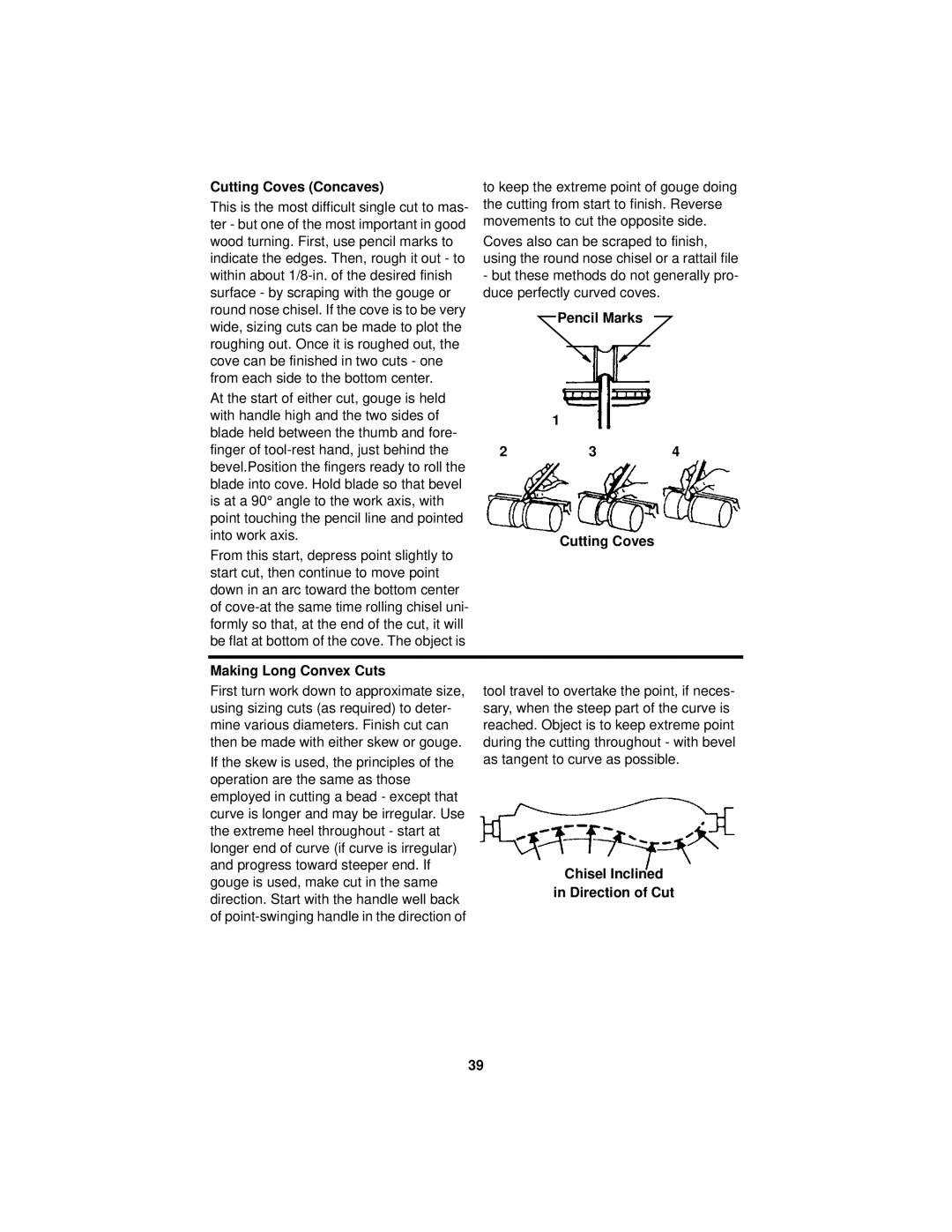
Cutting Coves (Concaves) | to keep the extreme point of gouge doing | ||||
This is the most difficult single cut to mas- | the cutting from start to finish. Reverse | ||||
ter - but one of the most important in good | movements to cut the opposite side. | ||||
wood turning. First, use pencil marks to | Coves also can be scraped to finish, | ||||
indicate the edges. Then, rough it out - to | using the round nose chisel or a rattail file | ||||
within about | - but these methods do not generally pro- | ||||
surface - by scraping with the gouge or | duce perfectly curved coves. |
| |||
round nose chisel. If the cove is to be very |
|
| Pencil Marks |
|
|
wide, sizing cuts can be made to plot the |
|
|
|
| |
|
|
|
|
| |
roughing out. Once it is roughed out, the |
|
|
|
|
|
cove can be finished in two cuts - one |
|
|
|
|
|
from each side to the bottom center. |
|
|
|
|
|
At the start of either cut, gouge is held |
|
|
|
|
|
with handle high and the two sides of |
| 1 |
|
| |
blade held between the thumb and fore- |
|
|
| ||
|
|
|
|
| |
finger of | 2 | 3 |
| 4 | |
bevel.Position the fingers ready to roll the |
|
|
|
|
|
blade into cove. Hold blade so that bevel |
| |
is at a 90° angle to the work axis, with |
| |
point touching the pencil line and pointed |
| |
into work axis. | Cutting Coves | |
From this start, depress point slightly to | ||
| ||
start cut, then continue to move point |
| |
down in an arc toward the bottom center |
| |
of |
| |
formly so that, at the end of the cut, it will |
| |
be flat at bottom of the cove. The object is |
| |
|
| |
Making Long Convex Cuts |
|
First turn work down to approximate size, using sizing cuts (as required) to deter- mine various diameters. Finish cut can then be made with either skew or gouge.
If the skew is used, the principles of the operation are the same as those employed in cutting a bead - except that curve is longer and may be irregular. Use the extreme heel throughout - start at longer end of curve (if curve is irregular) and progress toward steeper end. If gouge is used, make cut in the same direction. Start with the handle well back of
tool travel to overtake the point, if neces- sary, when the steep part of the curve is reached. Object is to keep extreme point during the cutting throughout - with bevel as tangent to curve as possible.
Chisel Inclined
in Direction of Cut
39
